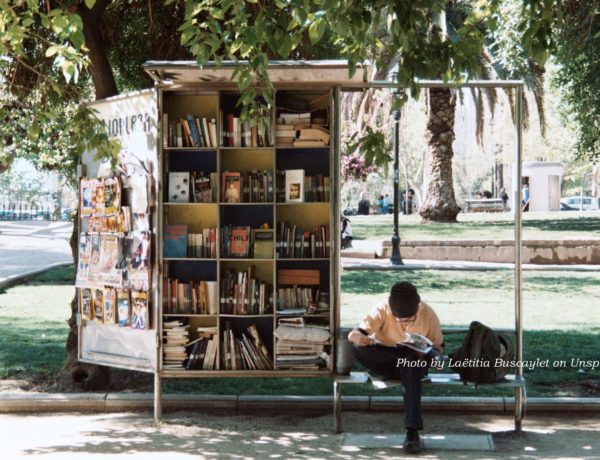Originally published April 19, 2020

Late last year, a nasty bundle of RNA began to invade the people of Hubei province. It was a swift and deadly invasion and the authorities responded with a resolute desire to contain the outbreak as quickly as possible. This is the lesson of history as each time we are faced with a virulent host we find time and control is of the essence; regardless of where or why the invasion began. The 1918 influenza, Ebola, Swine flu, SARS, MERS, all had different places of origin on our globe, different paths to becoming transmittable between humans. Yet the answer was the same—buy time until researchers can get solid science to deal with the invader. Or, you could just let a lot of people die.
If we are to beat this newest tiny monster, there are some actions we need to take. Actions that are working elsewhere and which we, in all our individualistic, me-me society, need to get a grasp on. First, a few facts. No, the media is not inflating the numbers, if anything the numbers are under reported. We do not have the materials, lab capacity, and healthcare professionals to do the testing required to truly know the scope of the pandemic in the United States. And that was our first mistake. As of now we are aware of seven strains of COVID-19. Four are relatively mild, three are deadly. Effective testing means we must be able to differentiate between the strains, especially when there is reinfection, or reemergence.
Yes, isolation has “flattened the curve” and although there are places in the country (such as New York) where the cases are still rising and health care workers and first responders are at their limits, there is also evidence that we are beginning to bring the infection rate down. That does not mean we can all rush out and do a group hug. If, however, we are to be successful in an attempt to restart life with some amount of success (news flash, things will not be “normal” for a very long time), then we need to find effective ways to accomplish three things: test (as noted above), track, and treat.
Some of the states are already forming coalitions and coops to accomplish goal number one: getting enough supplies, materials, and equipped labs to test every single person and to do so more than once using reliable protocols. Say, on a periodic basis, or after or before a possible vector encounter. Testing is how other countries were able to hop onto outbreaks quickly and effectively. Our country never really bothered to get started, and as of this date the United States is reporting 29% of confirmed cases worldwide, and 22% of the fatalities. COVID-19 hides. Even if you don’t have so much as a sniffle or a slightly elevated fever, you could be carrying the virus and be fully contagious. This is one of the reasons this beast is so difficult to control. You don’t know you are risking others (hoping, here, that you care).
Tracking means that when we know someone is infected, we find out where they’ve been and who may have been exposed. This is a crucial step for the same reasons given for testing. You don’t always KNOW you have this virus. Depending on which strain you have and the health profile of the persons you interact with, any number of levels of severity can result from your casual need to, say, visit the beach.
Treatment is an issue that labs around the world are working on. Even if we can’t kill this thing (yet) we may be able to find palliative ways to reduce the impacts of the virus. The earlier such treatments can be started, the better the chance of survival. Such treatments could also reduce residual complications. Survivors are showing evidence of damage to the lungs, heart, kidneys, and liver. These problems can mean a lifetime of health care which may or may not be covered by insurance. Another financial bomb on families already stressed from loss of income and a possible drain on any economic recovery.
These three things can buy us time to develop a safe and effective vaccine. Something that will protect us from this family of viruses. I won’t go into any arguments about vaccines on this blog. I can tell you I grew up in a time when measles could be deadly, when polio could kill on infection or years later, when scarlet fever could damage a heart for life. If we do the right things to give the researchers the time they need, any vaccine developed will be tested for safety, side effects, effectiveness, and dosage. The published target is 18 months. The fastest we have ever developed a vaccine was for the mumps and it took four years. The good thing is that the best labs in the world are collaborating on this effort. Such an effort is historical in scope. No, we can’t all stay on lock down for four years, people would starve, and things would get really ugly. That is why the three points mentioned above are so crucial: test, track, treat.
This means that you should support your local governments in the formation of plans that make sense and protect lives. Some industries (such as folks that work outside and have little contact with others) could restart, offices could further develop remote work models, healthcare can rely more on telehealth and telemedicine. Rather than trying to cram as many bodies in one space as possible, we can learn to spread out, wear masks, wash hands, be aware of fevers and coughs. We need to look seriously at payrates, sick leave, and employee protections. People need the option to go home when they are ill. Things will not “return to normal” in a month. We must find a new way to grow and sustain our economy. For that we need leadership.
This is part one of my COVID-19 outreach. Both are long winded but weeks of watching this catastrophe build has driven me to state, and stand by, a position. Maybe this virus started in a lab, maybe not. The only thing origin gives us now is more knowledge which may speed up a response. Beating up on a Chinese neighbor is not going to stop the pandemic. Wishing the disease on the people you feel responsible (or irresponsible) will not stop the pandemic. What will conquer this tiny foe is cooperation, compassion, and mutual support. We can build a new society, one that is healthy and economically sound. But it will take us all. Every one of us.


No Comments